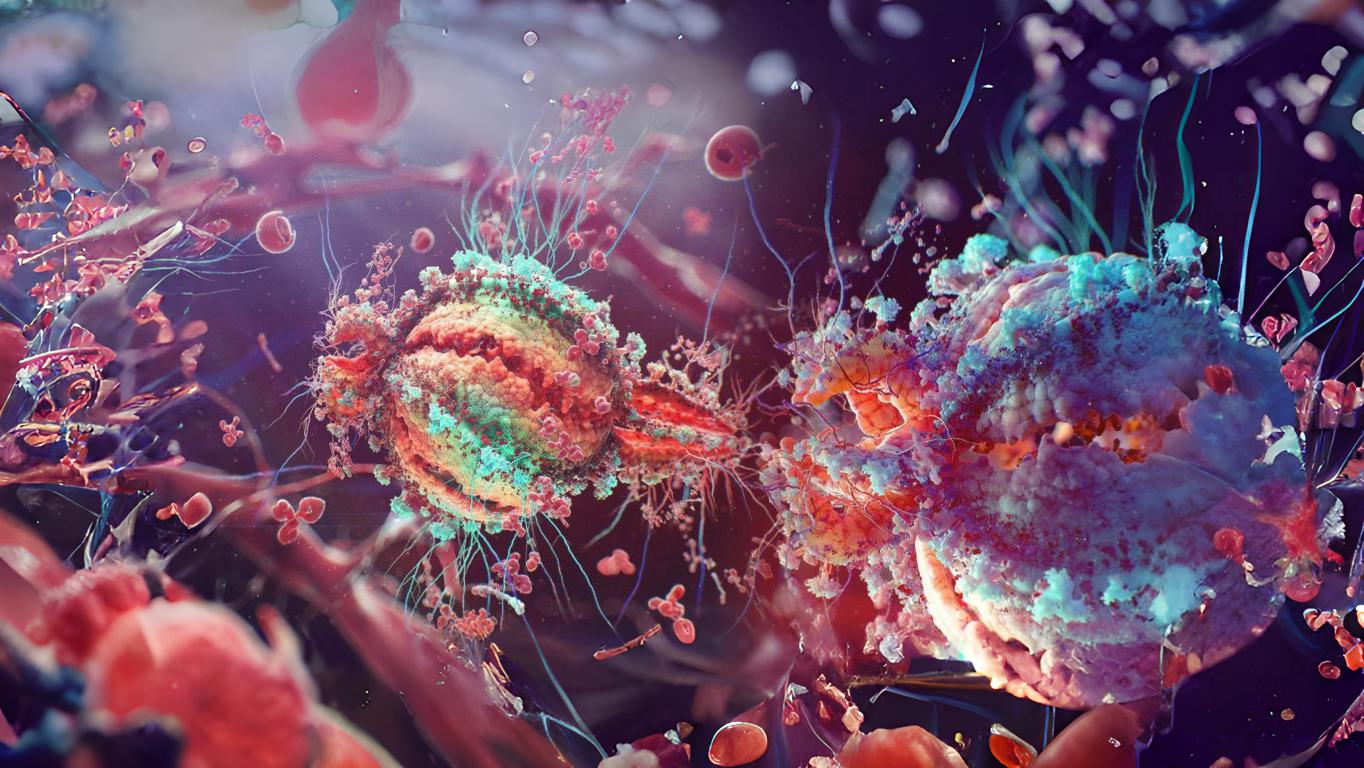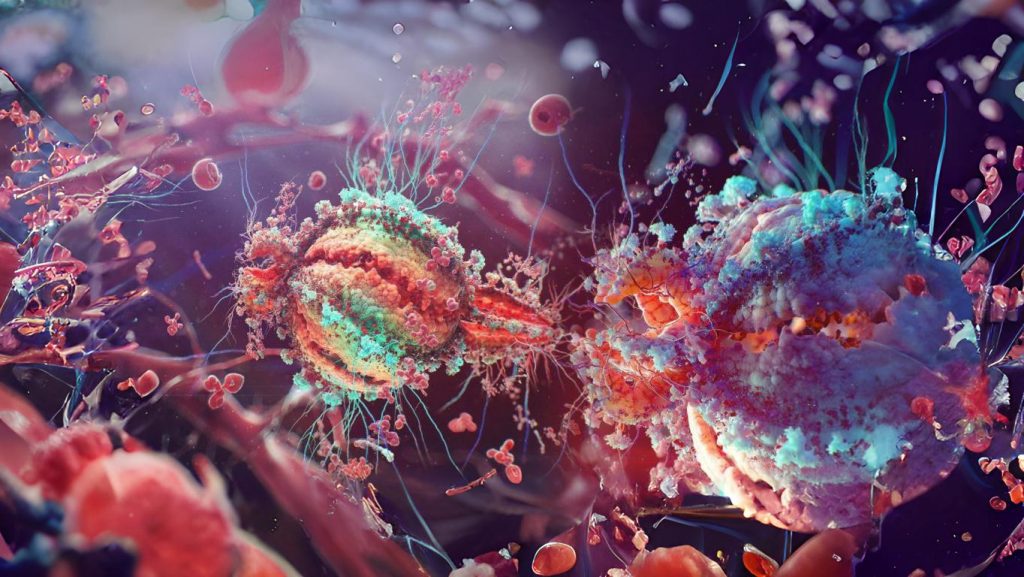Biomarker Discovery and Validation: Current Challenges in Oncology
 3 years ago
By Charlotte Di Salvo
3 years ago
By Charlotte Di Salvo

Biomarkers have shown significant potential across oncology clinical studies, especially in precision medicine for immunotherapy. Therefore, it is important that biomarker discovery and validation is optimised to produce the most effective drugs for patient populations. False positives and experimental bias are a few of the hurdles that arise during these stages.
For daily articles on the latest pharma trends and innovations, as well as interviews with leading experts and in-depth industry White Papers, subscribe to PharmaFeatures.com.
Biomarker discovery
Biomarkers have become an important tool in precision medicine across a number of therapeutic areas. In oncology, genetic profiling technology and targeted cell therapies have seen biomarkers play an important role in disease management for cancer patients.
A cancer biomarker refers to a “tumor characteristic or a response of the body in the presence of cancer that can be objectively measured and evaluated”. Cancer biomarkers can be used to measure the risk of developing the disease; response to therapy; and/or disease progression. This information is typically used to guide clinical decisions regarding choice and timeline of treatment relative to the pathogenesis of the cancer type.
Cancer biomarkers can be classified into two categories: predictive and prognostic biomarkers.
Predictive biomarkers are typically used to predict the response to specific therapeutic interventions such as positivity/activation of HER2 that predicts response to trastuzumab in breast cancer. Overexpression of HER2, a human growth factor, results in a clinically aggressive subtype of breast cancer.
Prognostic biomarkers, on the other hand, aim to inform doctors regarding the likely patient outcome i.e. risk of disease recurrence or potential progression in the future. The 21-gene recurrence score is an example of a prognostic cancer biomarker which was predictive of breast cancer recurrence and overall survival in node-negative, tamoxifen-treated breast cancer. Pharmacokinetic/dynamic/genomic biomarkers can also be used to evaluate drug interaction with the patient.
The discovery study for biomarkers typically involves pre-clinical investigations of a pool of candidate biomarkers. The objective of this is to identify “a short list of promising markers that are associated with clinical outcome of interests for further investigation”.
The discovery of potential biomarkers, however, is a difficult task with a number of challenges that compromise the reliability of a new marker.
Challenges
One of the main challenges in biomarker discovery is the high number of false discoveries. This occurs when initial scientific findings associated with a new biomarker cannot be reproduced by other laboratories or independent samples. A number of factors can contribute to false discovery including execution errors, poor study design and bioinformatic shortcomings.
As discussed in a recent review, false discovery is closely related to the problem of scientific irreproducibility. If a biomarker discovery cannot be reproduced by a number of external sources, then it is not suitable for validation. This not only costs pharmaceutical companies significant amounts of money in funding experiments for an invalid biomarker; it also slows down the progression of biomarkers in drug development for precision medicine.
One potential solution to this problem is shifting from “the orthodox discovery of biomarkers that are common for a cancer type to screening of serum samples of each patient”. By identifying markers unique for specific tumour types, it could potentially reduce the chance of biomarkers failing to demonstrate specificity and sensitivity for a number of patients.
Bias is one of the greatest causes of failure in biomarker discovery and validation studies. The study design, through which biospecimens are analysed, is a significant source for bias. Bias occurs when “systematic error [is] introduced into sampling or testing by selecting or encouraging one outcome or answer over others”.
According to a review, it is ideal to prospectively collect biospecimens based on a succinct inclusion and exclusion criteria “pre-specified in the study protocol”. Therefore, the chance of false positives arising is theoretically lower as the discovered biomarker must meet both criteria before proceeding for validation studies.
Next-generation sequencing (NGS) is a valuable genomic tool used in cancer biomarker discovery. While the high-resolution data achieved with NGS is useful for the identifying large numbers of genomic alterations, it results in a considerable increase in computational analysis and bioinformatics support needed to interpret data. This can present an issue to smaller biotech companies with limited funding and experimental capacity.
Biomarker validation
Following discovery studies, candidate biomarker assays must undergo validation- this is split into two types. Analytic validation determines “how accurately and reliably the test measures the analyte(s) of interest in the patient specimen”. Clinical validation, on the other hand, investigates “how robustly and reliably is the test result correlated with the clinical phenotype or the outcome of interest”.
There are a number of different assay technologies available for biomarker validation depending on the specimen. For analysis of gene expression and DNA mutations, real-time polymerase chain reaction (PCR) is a popular in vitro method that can amplify small samples large enough to study. Assessing protein expression, on the other hand, often falls to immunohistochemistry.
There are two key statistical approaches for clinical validation of an assay. Internal validation divides a study population into two independent groups. For clarification, the study population “reflects the target population in which the test will be used”. One sample group, defined as the training set, is used to identify and characterise the biomarker. The second group, known as the validation set, is used to assess whether the “external validity of the biomarker/model is maintained in a sample cohort—independent from the training set”.
Unfortunately, internal validation is not sufficient to clinically validify biomarkers. Hence, external validation is required to be performed on an independent dataset. Any predictive biomarkers must undergo external validation in order to test clinical performance for regulatory approval.
According to a 2019 review, one of the primary challenges in clinical validation for biomarkers is that there is no institution responsible for monitoring the evidence for or against particular biomarker uses (at the time of publication). As a result, there is no governing body with the authority “to revoke the use of a biomarker in clinical practice if it has been shown to be invalid”. This presents a significant cause for concern with regards to the safety and efficacy biomarkers in drug development.
Clinical validation is a crucial part of biomarker development, which, if not performed correctly, could cause harm in patients. Despite innovations improving the multiple stages of validation, there are a number of challenges which need to be addressed. Continued research into optimising biomarker discovery and validation will no doubt improve the drug development process, producing more effective and safer drugs for patients.
To discuss these topics further with sector experts, and to ensure you remain up-to-date on the latest in clinical development, sign up for Proventa International’s Oncology Strategy Meeting, set for 17 June 2021.
Charlotte Di Salvo, Junior Medical Writer
Proventa International

Navigating the Complex World of Global Regulatory Affairs in Oncology
In today's fast-paced global pharmaceutical landscape, the regulatory affairs sector plays a pivotal role in ensuring the safety, efficacy, and market access of oncology drugs. As the demand for innovative cancer therapies continues to grow, understanding the intricacies of global...
11 months agoNavigating the Complex World of Global Regulatory Affairs in Oncology
In today's fast-paced global pharmaceutical landscape, the regulatory affairs sector plays a pivotal role in ensuring the safety, efficacy, and market access of oncology drugs. As the demand for innovative cancer therapies continues to grow, understanding the intricacies of global...
11 months ago
Overcoming the Hurdles: Navigating the Challenges in Oncology Clinical Trials
In the world of medical research, oncology clinical trials are at the forefront of innovation and discovery. These trials play a crucial role in advancing our understanding of cancer and developing more effective treatments. However, the path to successful oncology...
11 months agoOvercoming the Hurdles: Navigating the Challenges in Oncology Clinical Trials
In the world of medical research, oncology clinical trials are at the forefront of innovation and discovery. These trials play a crucial role in advancing our understanding of cancer and developing more effective treatments. However, the path to successful oncology...
11 months ago
Embracing a Patient-Centric Approach in Oncology Trials
In the realm of healthcare and medical research, the term "patient-centric" has gained significant traction in recent years. This shift in focus towards prioritizing patients' needs and preferences is not only transforming the healthcare industry but is also making waves...
11 months agoEmbracing a Patient-Centric Approach in Oncology Trials
In the realm of healthcare and medical research, the term "patient-centric" has gained significant traction in recent years. This shift in focus towards prioritizing patients' needs and preferences is not only transforming the healthcare industry but is also making waves...
11 months ago